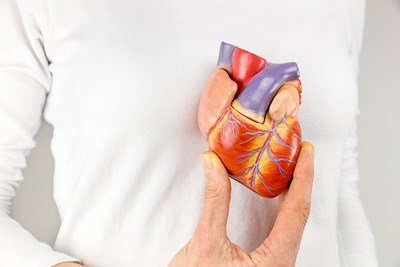Heart diseases are responsible for about 25% of fatalities in the United States every year. Coronary artery disease (CAD), also called atherosclerotic heart disease, makes up more than half of that, accounting for up to 370,000 deaths each year, according to the Centers for Disease Control and Prevention (CDC). Here’s a look at the symptoms, causes, diagnostics, and prevention of this most common of heart diseases.
Causes
CAD develops slowly, often unnoticed, over many years. Atherosclerosis is a condition in which the arteries begin to get clogged up with bits of plaque. CAD begins when the coronary arteries themselves become atherosclerotic. As more plaque builds up, it becomes difficult for blood flow to reach the heart the way it should. Additionally, the plaque itself can rupture or burst. The blood cells try to repair the rupture, which adds to the amount of blockage within the artery, making the passage of blood even more difficult and potentially causing a heart attack.
A variety of factors can cause the initiating damage to the arteries. Cigarette smoking is one of the most preventable causes of damage. Inactivity can also be extremely detrimental to heart health. High cholesterol or blood pressure can even be initiating factors. Other risk factors include diabetes and some forms of chest cancer radiation.
Symptoms
It may take years for any signs of CAD to crop up, but that doesn’t mean it isn’t present. In some situations, there may be no sign at all until a heart attack occurs, which is often too late. When patients present many of the CAD risk factors, doctors may begin testing or treating risk factors immediately.
Angina is a main indicator of the present of CAD; it appears as pain in the chest, often brought on during periods of exertion or stress. Difficulty breathing may be another indicator of CAD; the heart is unable to get enough oxygen because of the clogged arteries, making strenuous activities even more difficult than they used to be. Heart palpitations or feeling unnaturally tired may also suggest the presence of CAD.
Diagnosis
The presence of risk factors or signs of CAD may prompt the doctor to start with any of a number of tests available for diagnosing CAD. In addition to a physical exam and blood testing, the following tests may be used:
- Electrocardiogram: Monitors electrical signals from the heart for insufficient blood flow
- Echocardiogram: Creates an image of the heart in real time using sound waves, allowing doctors to see weakening areas
- Stress test: Patient begins moderate exercise so that the heart can be monitored through an ECG or echocardiogram
- Nuclear stress test: A radioactive substance is injected into the bloodstream to make poor blood flow areas more obvious during a stress test.
- Angiogram and cardiac catheterization: Injected dye highlights areas of poor blood flow or blockage
- Imaging Tests: In addition to echocardiograms, magnetic resonance imaging (MRI) and computerized tomography (CT) scanning provide alternative ways to view interior tissues and blood vessels
Treatment/Prevention
The sooner a drastic lifestyle change is implemented, the better the chances are of halting the progression of CAD. Although there are a variety of treatments (such as the angiogram and cardiac catheterization) and medications that can provide ways of treating and managing CAD, it is impossible to reverse is completely. It is, however, possible to slow down the progression of the disease and prevent a heart attack.
Despite these treatments and medications, the best method to both treat and prevent CAD is to adapt to a healthier lifestyle. Implement a doctor approved exercise regimen. Switch to a more heart healthy diet, with more fruits and vegetables, whole grains, and lean meats. Stop smoking, reach a healthy weight, and learn to manage stress.



